Easy Sesame Ginger Dressing is a flavorful, sweet and savory addition to salads or for marinades. It’s made from healthy, simple ingredients and can be prepared in just minutes. Try this delicious low-carb and low-FODMAP salad dressing on Asian noodle salad, roasted vegetables, stir frys and more!

Jump to:
Get ready for your next salad adventure by switching things up a bit with an Asian sesame dressing that includes zesty ginger and toasted sesame oil. It may just become your new favorite chicken marinade or stir-fry sauce.
This sesame ginger dressing is so versatile and can be used in a variety of ways. Top a salad with this dressing and add some umami rich Miso Tuna Salad made with creamy homemade Miso Mayo. If you're not a fan of mayonnaise, top your salad with an Asian Tuna Salad (without mayo). It’s a wonder for easy meal prep and will liven up your weekly menu, guaranteed!
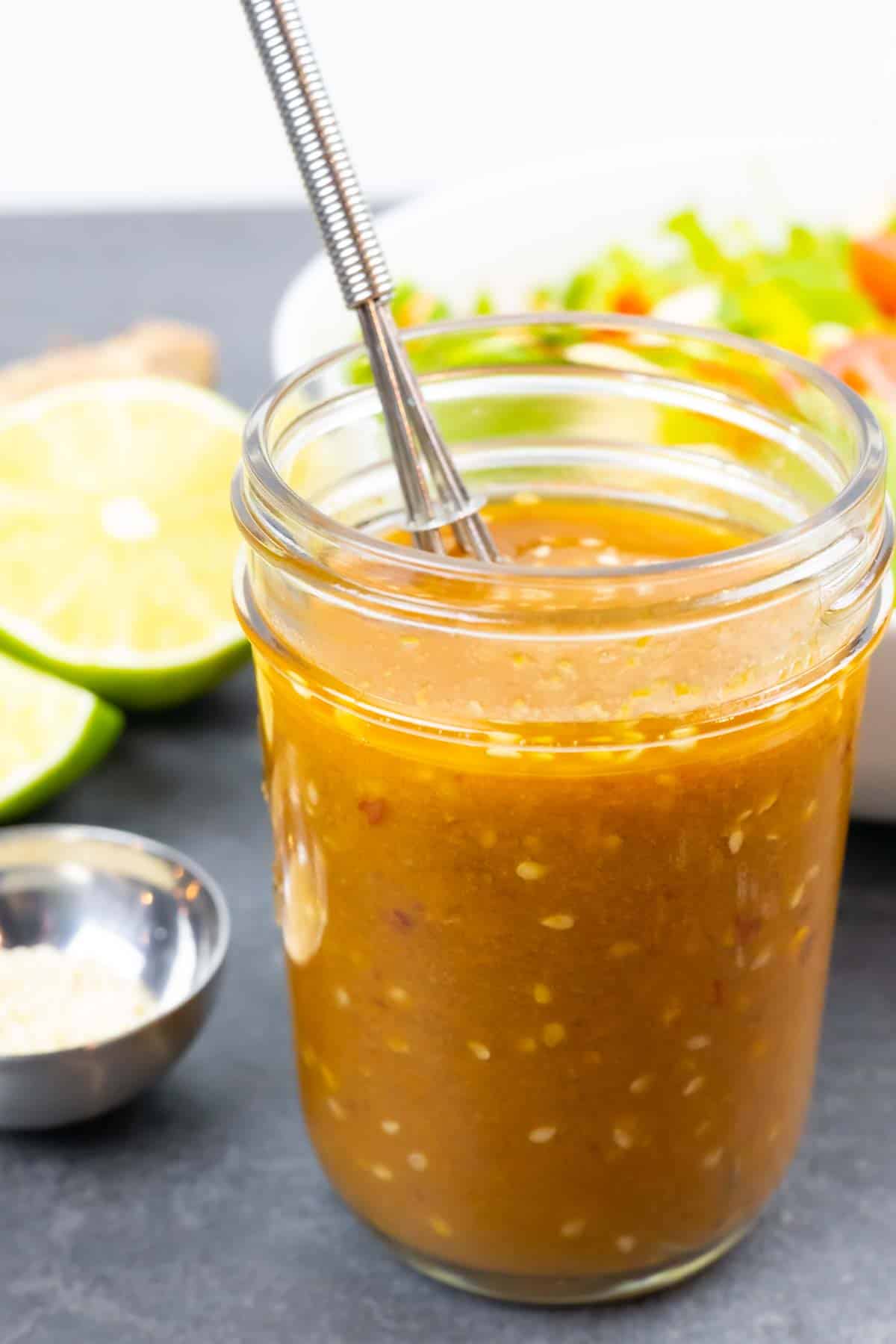
Why you’ll love this recipe
- Easy, healthy and gluten-free – this recipe uses tamari, a gluten-free soy sauce and can be made in about 5 minutes
- Economical and customizable – homemade dressings are so much less expensive to make and you control how much of each ingredient to add. For example, if you like more heat, add more chili!
- Special diet friendly salad dressing – Whole30, keto, paleo and FODMAP-friendly. The tamari can easily be swapped for coconut aminos and the sweetener is optional.
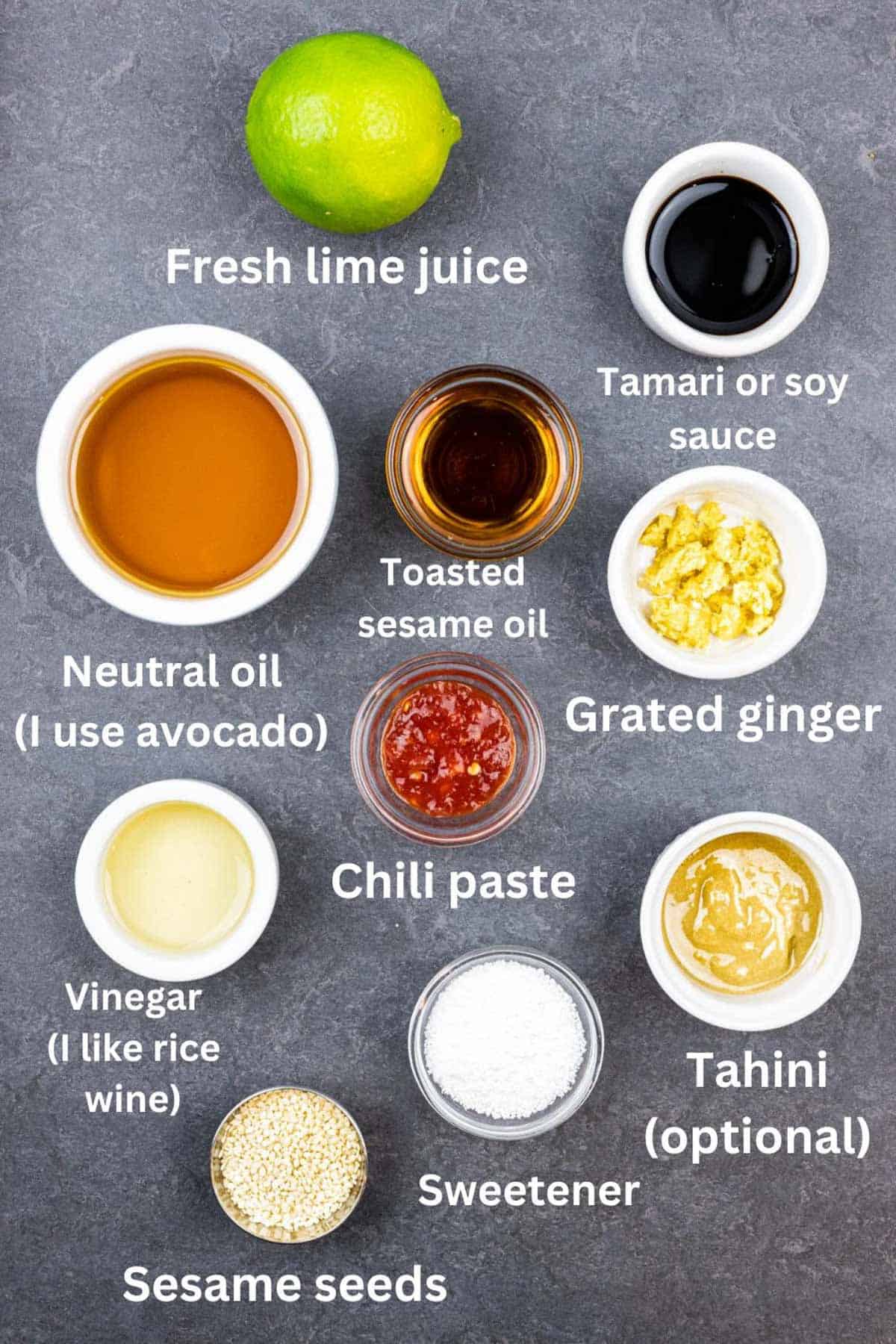
Ingredients
Homemade dressings come together so easily with a handful of ingredients you may just have on hand!
- Toasted sesame oil – nutty, rich, with a distinctive, bold flavor. Use toasted sesame oil - not regular sesame oil. The flavors are very different.
- Tamari, soy sauce or coconut aminos – for a gluten-free dressing, use tamari. It’s gluten-free soy sauce, with all of the traditional flavor of regular soy sauce. It adds a nice, rich, savory, salty flavor. Coconut aminos are also a great soy sauce alternative.
- Salad oil – you have options here. For a low-FODMAP dressing, I recommend garlic infused olive oil. Avocado oil or extra-virgin olive oil are also perfect choices. Avocado oil has the most neutral flavor and I use it most often.
- Vinegar – use rice wine vinegar, apple cider vinegar, white wine vinegar or champagne vinegar. Rice wine vinegar is my favorite to use as it has a nice mild taste.
- Fresh squeezed lime juice – this really adds a light, bright flavor
- Fresh ginger – finely chopped or grated is best. If you don’t have fresh ginger, you can use powdered ginger or another favorite of mine, ginger juice. I like to use a zester to get the ginger root finely grated.
- Sweetener of choice – I like to use stevia, but you can use any alternative sweetener. Not following a keto diet? Regular sugar, honey or maple syrup works brilliantly. For a Whole30 salad dressing, consider adding chopped dates and pureeing them into the dressing before adding sesame seeds.
- Chili paste – my favorite is Sambal Oelek chili paste, but sriracha sauce or Tapatio are also perfect options
- Tahini (optional) – adding tahini creates a creaminess and is totally optional, but recommended! If you prefer a sesame ginger vinaigrette, then leave this out.
Instructions
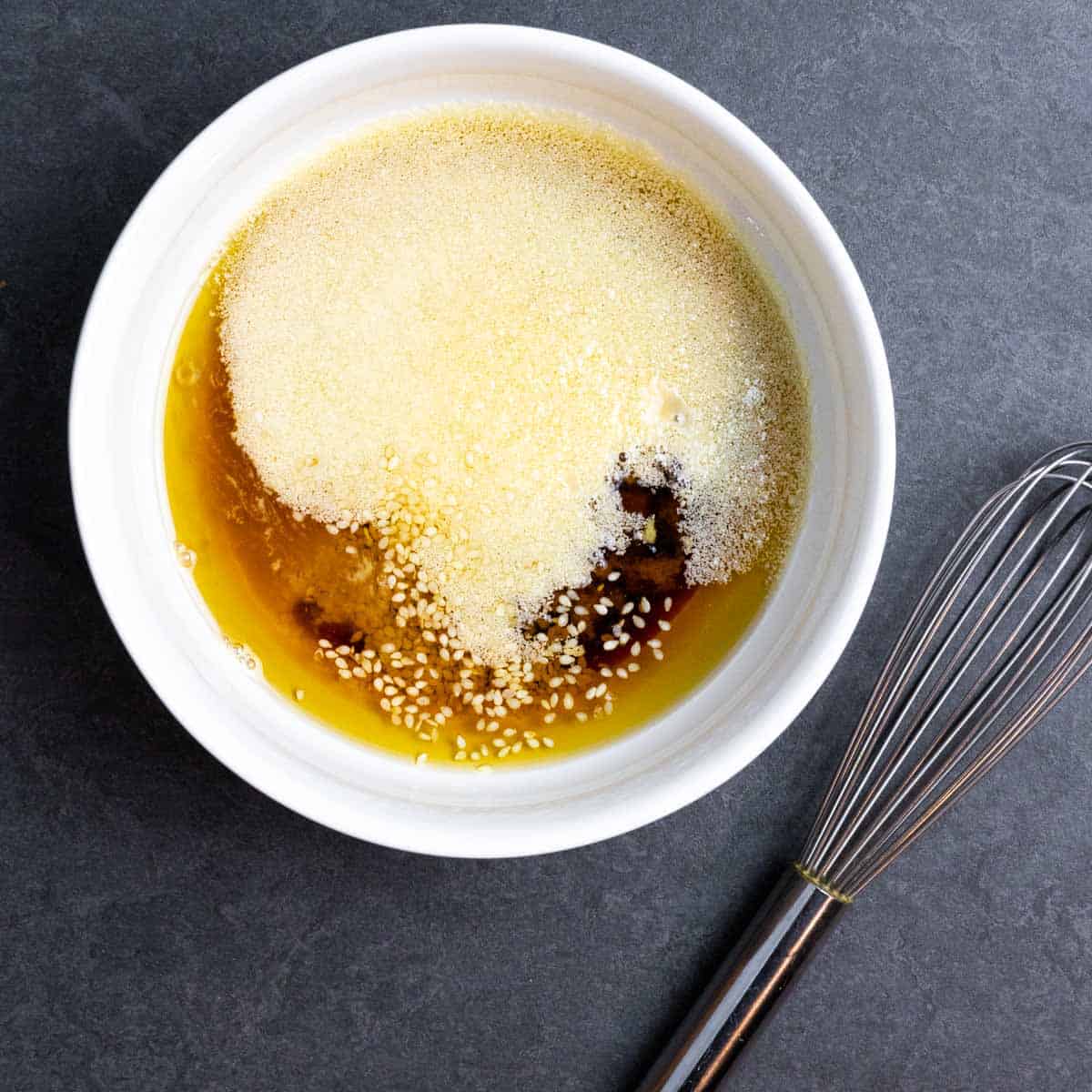
Add all ingredients to a medium bowl.
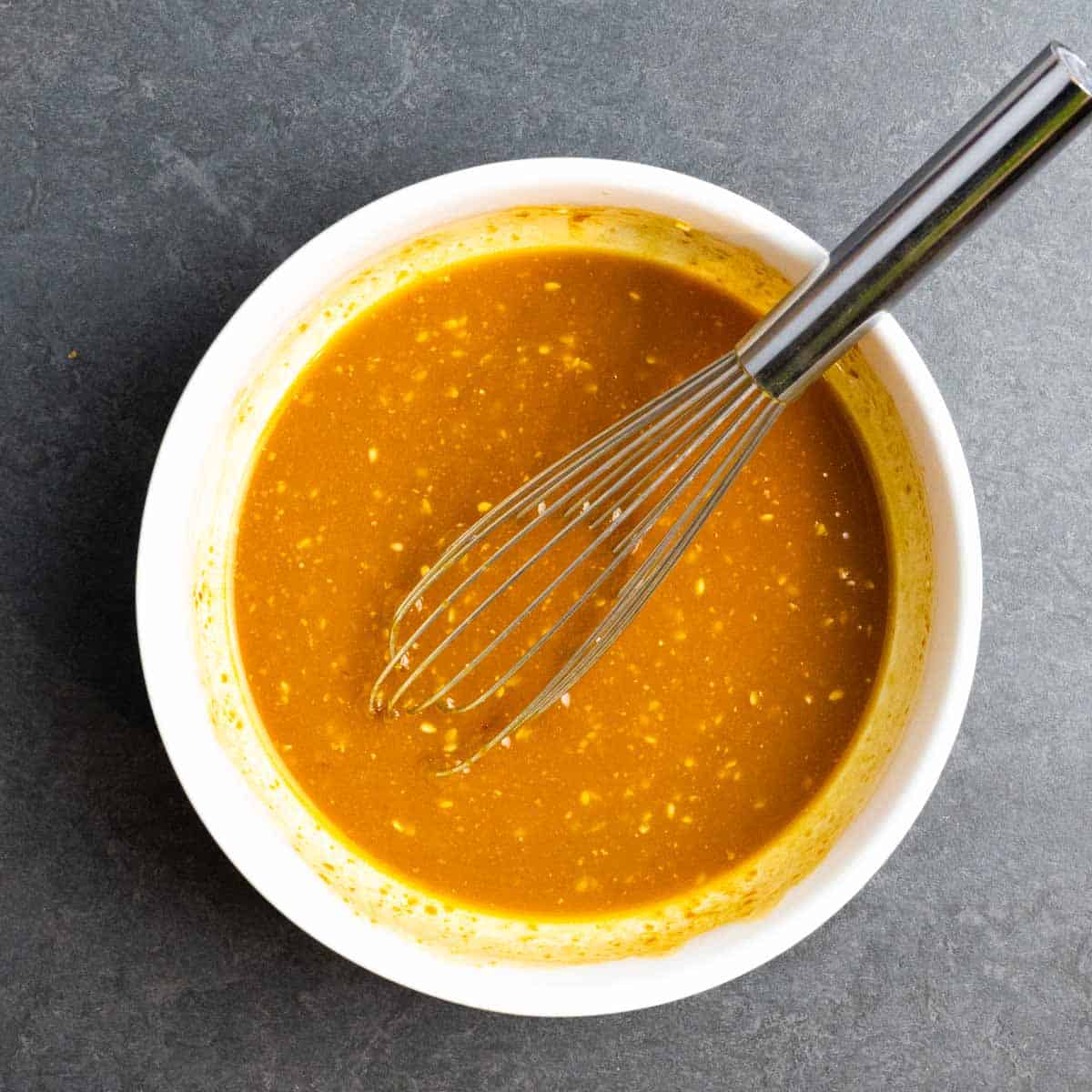
Whisk together until thoroughly combined.
There are a few alternate and super easy ways to assemble your dressing:
- Combine ingredients in a mason jar or salad dressing shaker and shake well
- Blend all of the ingredients in a blender (I like to use my Nutribullet here) until smooth and emulsified. Or, use an immersion blender. If making this salad dressing Whole30, add dates for some sweetness and blend it all together.
It doesn’t get easier than that!
How to store
Store in a sealed container in the refrigerator for up to a week. I like to store all of my dressings in mason jars.
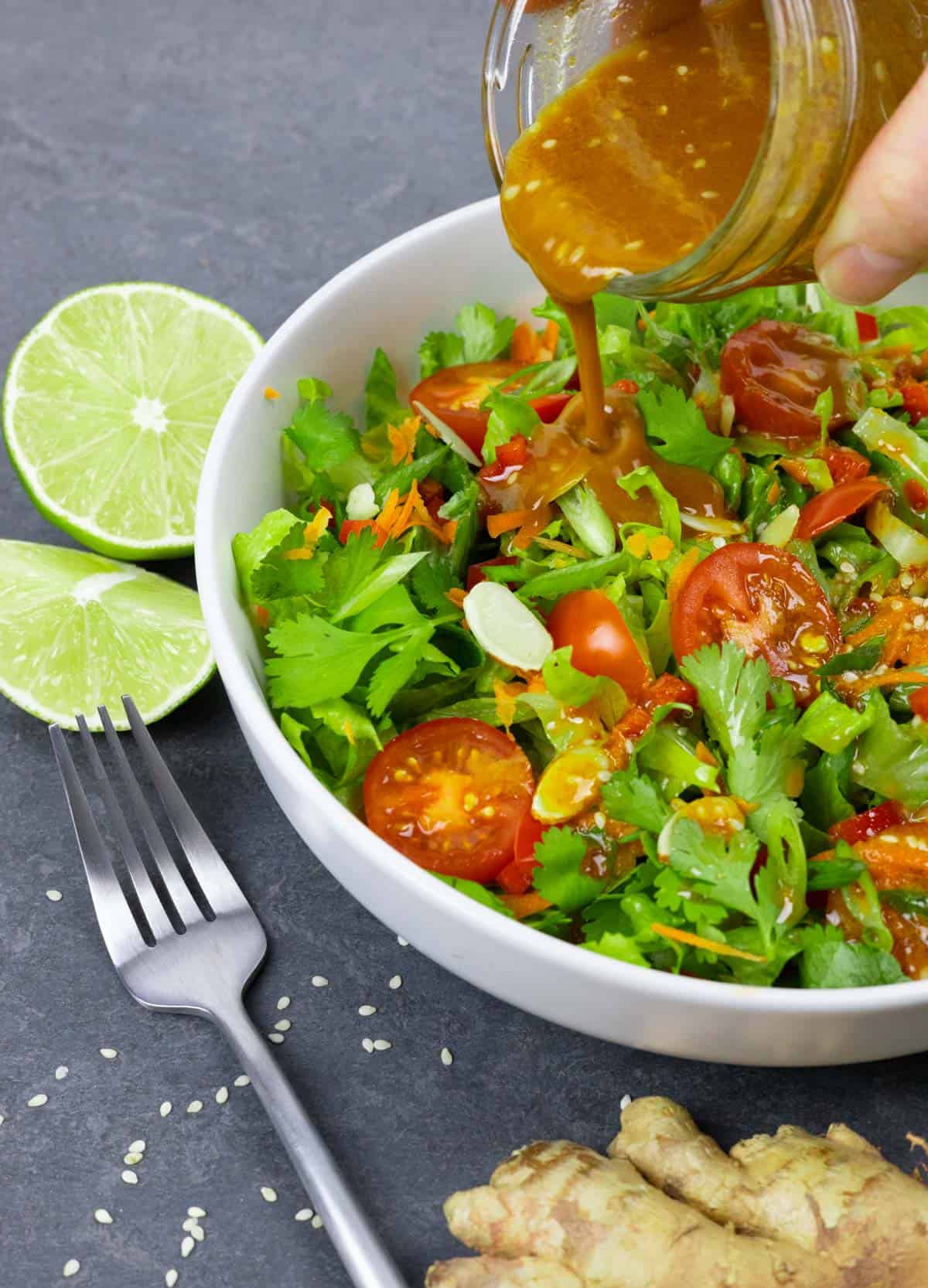
How to serve
- On salad – use this sesame ginger dressing on any tossed salad
- Noodle sauce – dress an Asian cold noodle salad, spiralized cucumber or zucchini noodles
- Asian coleslaw – simply shred cabbage and top with this amazing dressing
- Drizzle – add to roasted veggies, crispy tofu or on any rice, noodle or Buddha bowl
Variations
- Make it thicker – add extra tahini for a thicker sauce or use as a dip
- Peanut sauce – instead of adding tahini, use peanut butter. And, add chili sauce or chili peppers for a spicy peanut sauce.
- Marinade – use as a marinade for chicken, fish or pork
- Stir fry sauce – this makes a wonderful stir fry sauce! Add it to your stir fry during the last minute of cooking.
- Orange sesame dressing – add some orange peel for an orange sesame dressing. Use either fresh or powdered orange peel. I absolutely ADORE this variation. ¼ teaspoon will do the trick.
- Add garlic – if you aren’t following a low-FODMAP diet, add one finely diced garlic clove or ¼ teaspoon of garlic powder
- Whole30 salad dressing – replace the sweetener with chopped dates and blend
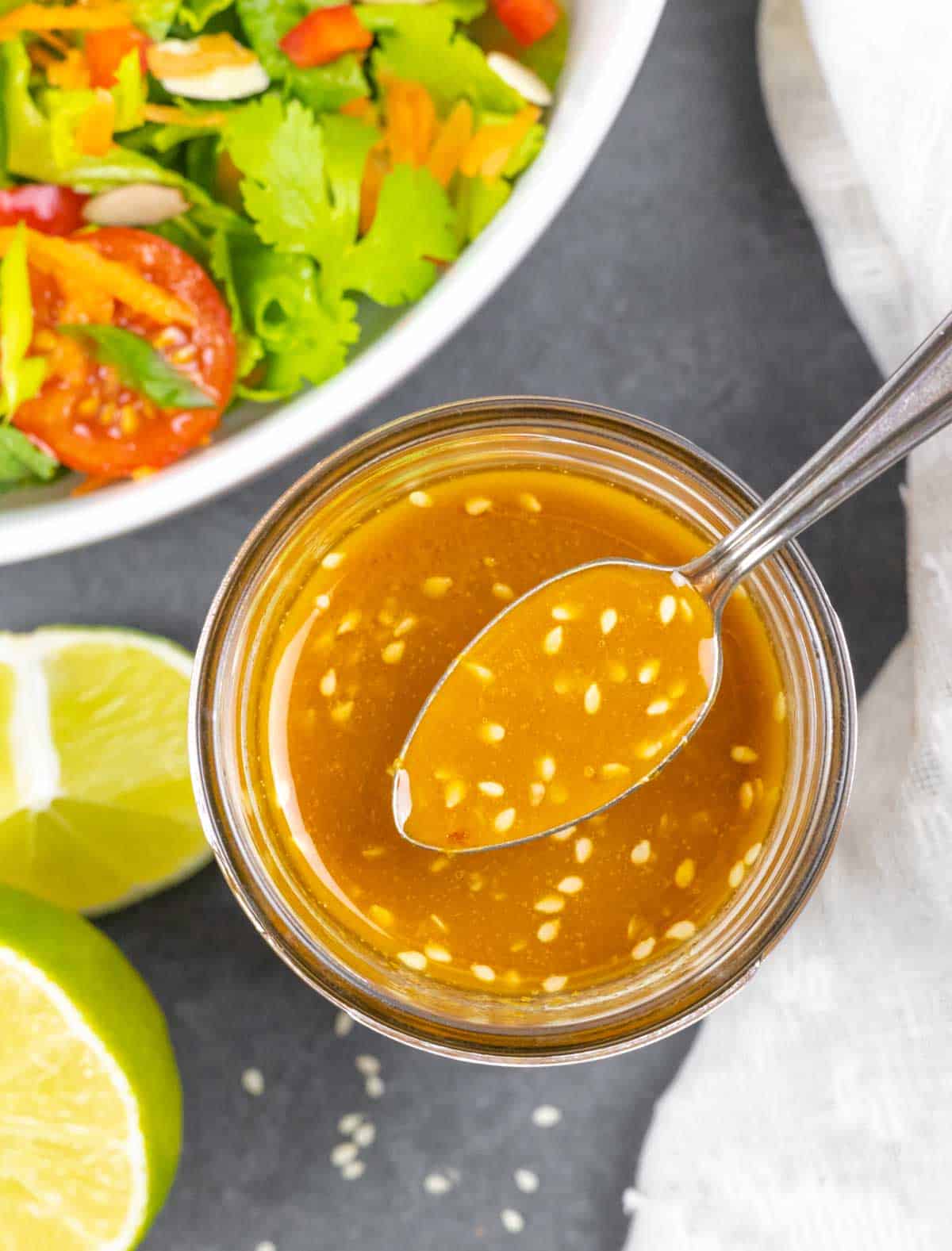
FAQ
Yes! Most oils are considered low-FODMAP because they are fats, rather than fermentable carbohydrates. Sesame oil is FODMAP-friendly.
Tahini is believed to have anti-cancer and anti-inflammatory properties. It is highly nutritious, antioxidant-rich and contains compounds that protect the liver and kidneys from damage.
Yes - tahini (ground sesame paste) is a FODMAP-friendly condiment in servings up to two tablespoons.
Coconut aminos is a dark colored sauce that has a flavor that is very similar to soy sauce, but is made from the sap of the coconut palm (not the actual coconuts). It's gluten-free and soy-free and tastes a little milder than soy sauce.
Both soy sauce and tamari are low-FODMAP in servings of up to two tablespoons, making either a delicious low-FODMAP condiment.
Did you make this recipe? Let me know how you liked it by giving a star rating and leaving a comment!
📖 Recipe
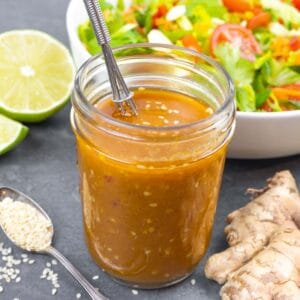
Sesame Ginger Salad Dressing (Gluten-free)
Ingredients
- ½ cup avocado oil (can use olive oil or garlic infused olive oil)
- 2 tablespoons tamari (or use soy sauce or coconut aminos)
- 2 tablespoons rice wine vinegar (apple cider, champagne or white wine vinegars can also be used)
- 2 tablespoons toasted sesame oil
- 2 tablespoons lime juice (fresh)
- 2 tablespoons powdered stevia (or sweetener of choice)
- 1 tablespoon tahini (optional, but recommended for a creamier dressing)
- 1 tablespoon ginger root (fresh grated or powdered ginger)
- 1 teaspoon chili paste (I like Sambal Oelek or sriracha)
- 2 teaspoons sesame seeds
Instructions
- Combine all ingredients in a medium bowl and whisk together until thoroughly combined (see notes for additional methods).
Notes
Optional mixing instructions
- Combine ingredients in a mason jar or salad dressing shaker and shake well
- Blend all of the ingredients in a blender (I like to use my Nutribullet here) until smooth and emulsified. Or, use an immersion blender.
Grating ginger
I find that using a zester to grate the ginger root creates super finely grated ginger that distributes really well throughout the dressing.Variations
- Make it thicker – add extra tahini for a thicker sauce or use as a dip
- Peanut sauce – instead of adding tahini, use peanut butter. And, add chili sauce or chili peppers for a spicy peanut sauce.
- Marinade – use as a marinade for chicken, fish or pork
- Stir fry sauce – this makes a wonderful stir fry sauce! Add it to your stir fry during the last minute of cooking.
- Orange sesame dressing – add some orange peel for an orange sesame dressing. Use either fresh or powdered orange peel. I absolutely ADORE this variation. ¼ teaspoon will do the trick.
- Add garlic – if you aren’t following a low-FODMAP diet, add one finely diced garlic clove or ¼ teaspoon of garlic powder
- Whole30 salad dressing – replace the sweetener with chopped dates and blend
How to store
Store in a sealed container in the refrigerator for up to a week. I like to store all of my dressings in mason jars.Nutrition
*Net carbs = carbohydrates - fiber
Nutritional information is an estimate, calculated using online tools and does not include optional ingredients unless otherwise indicated.



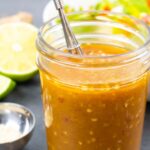
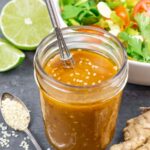
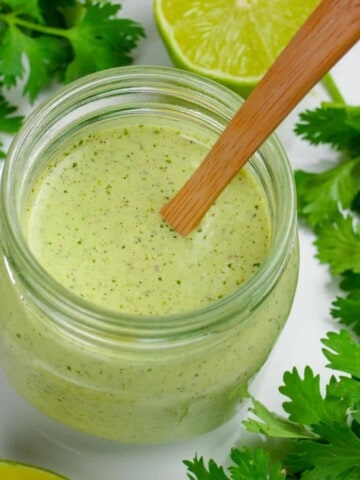
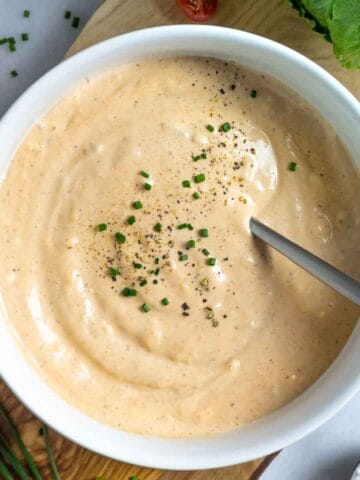
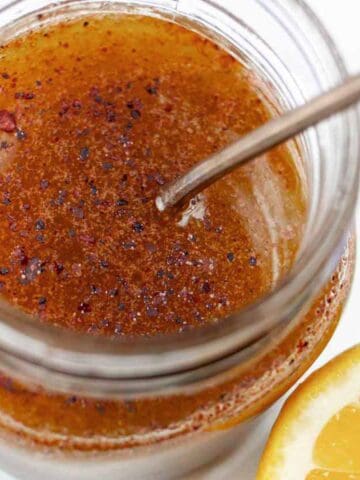
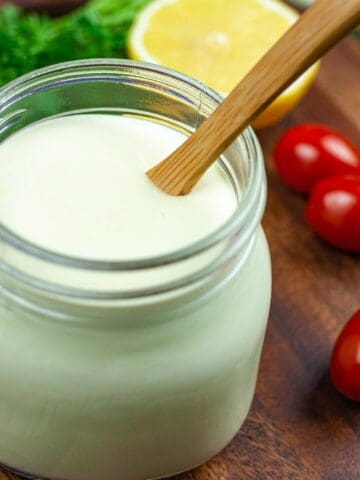
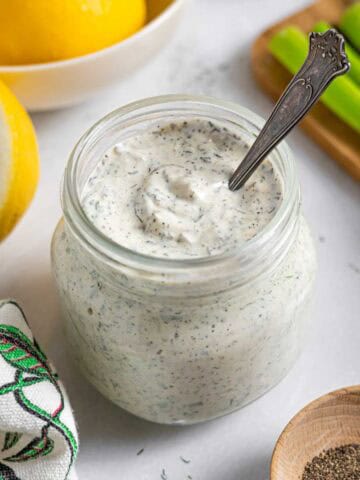
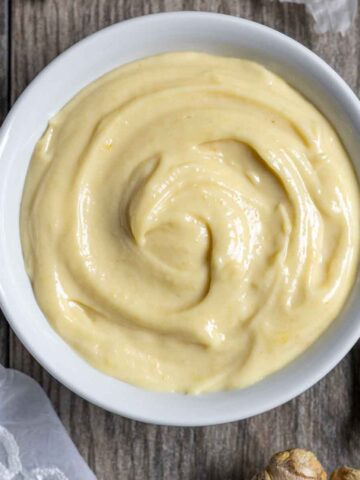

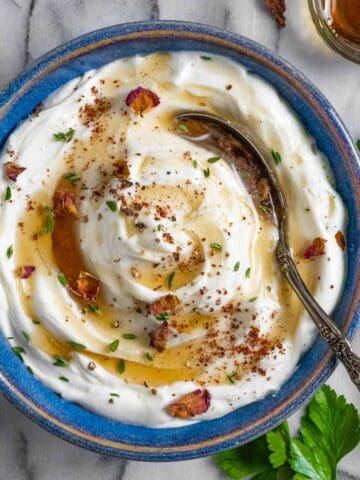
Tracey Hatch-Rizzi says
When we run out of tahini, I make this dressing with peanut butter, which is just outstanding. It's a versatile peanut sauce and my family really enjoys it over steamed veggies!